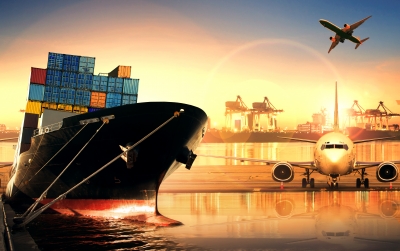-
Global air cargo is facing several challenges and risks in the last quarter of 2025, including rising costs, tight capacity, stricter security rules in the European Union, and continuing geopolitical risks from US tariffs and conflicts
-
Airfreight capacity has been shrinking since May 2025 with the drop in carrier availability
-
Passenger bellyhold capacity is covering some of the demand, but not enough to offset the decline or drive overall growth
-
The Asia to Europe corridor remains one of the largest and most strategic, showing resilience with capacity consistently growing in double digits since March
-
Demand grew 4% year-on-year through August, driven primarily by outbound Asia Pacific, Intra-Asia Pacific, and Europe–Asia Pacific trade lanes
-
Two new EU regulations – Aviation Security Regulation 2025/920 and Import Control System 2 – took effect in September, both aimed at strengthening cargo security
-
“Shippers should plan for potential rate hikes during peak periods and account for variability, especially for time-sensitive or seasonal cargo,” DHL Global Forwarding said in its Airfreight State of the Industry report for September
Global air cargo is facing several challenges and risks in the last quarter of 2025, including rising costs, tight capacity, stricter security rules in the European Union (EU), and continuing geopolitical risks from US tariffs and conflicts.
“Q4 2025 likely to see generally stable but occasionally rising rates, with continued volatility driven by capacity constraints, demand fluctuations, and geopolitical or operational disruptions,” according to the Airfreight State of the Industry report for September of DHL Global Forwarding.
In the first half of the year, average worldwide rates and rates from Asia-Pacific origins showed year-on-year monthly hike until April. By May, however, both have declined year-on-year (YOY), with August recording decreases of 3% and 4%, respectively. Overall, year-to-date figures were still slightly higher than last year, with a 1% increase for both worldwide and Asia-Pacific rates.
Spot rates have seen moderate increases, though heightened volatility is expected in the closing months of the year as carriers adjust pricing in real time to reflect changes in demand and capacity.
“Shippers should plan for potential rate hikes during peak periods and account for variability, especially for time-sensitive or seasonal cargo,” DHL Global Forwarding said. Airfreight capacity has been shrinking since May 2025 with the drop in carrier availability.
Passenger bellyhold capacity is covering some of the demand, but it is not enough to offset the decline or drive overall growth.
The Asia to Europe corridor remains one of the largest and most strategic, showing resilience with capacity consistently growing in double digits since March, with Europe standing out as the only region to record positive YOY growth across all months in 2025.
Demand rebounded in July and appears to be picking up, which will add pressure on load factors. Carriers may operate close to capacity in “favorable lanes” such as Asia-Europe, intra-Asia as well as routes handling express, pharma, and perishables.
“As a result, shippers may face intense competition for available slots, giving carriers the opportunity to push rates higher where demand exceeds supply,” the DHL Global Forwarding report said.
Demand grew 4% YOY through August, driven primarily by outbound Asia Pacific, Intra-Asia Pacific, and Europe–Asia Pacific trade lanes.
The continuing demand drivers include specialized cargo, booming e-commerce, and continued investment in regional logistics infrastructure.
READ: Air cargo demand remains strong fueled by e-commerce
Meanwhile, two new EU regulations took effect in September, both aimed at strengthening cargo security.
EU Aviation Security Regulation 2025/920, effective September 1, requires Regulated Agents and Known Consignors to provide detailed information for export shipments — including consignor and consignee details, as well as a description of the good. EU’s Import Control System 2, effective September 2, mandates businesses, through all transport modes, to submit safety and security data through an Entry Summary Declaration and obtain an Economic Operators Registration and Identification (EORI) number from the customs authority of an EU member state.
On jet fuel cost, the International Air Transport Association and the International Energy Agency forecast a 2.1% increase in demand for 2025, driven by a 5% rise in global air passenger transport.
The West Texas Intermediate (WTI) crude oil prices have remained relatively stable, trading around $63 per barrel, which has helped keep fuel prices steady. The typical post-summer decline in demand has further contributed to lower prices, while refiners maintaining high yields have ensured a consistent supply of jet fuel.
Fleet growth for carriers remains constrained despite new deliveries, with delays for Boeing 777-8F and slow ramp-up for Airbus A350F. Global widebody freighter fleet is projected to grow less than 1% annually through 2030, signaling a persistently tight air cargo capacity environment.
Passenger-to-freighter aircraft conversions provide temporary capacity relief, but high costs and long lead times limit their long-term scalability.
Despite the headwinds, global demand remains resilient, the report said. “Air cargo volumes continue to grow 3–5% YTD August 2025 versus 2024, reflecting steady underlying market strength.”
In the 4th quarter, air cargo is seen to have “margin and reliability pressures from capacity constraints, rising costs, congestion, and potential demand shocks from tariffs, seasonal disruptions, and a global economic slowdown,” DHL Global Forwarding said.
READ: Global air cargo volumes up 5% in July in runup to US tariffs adoption









